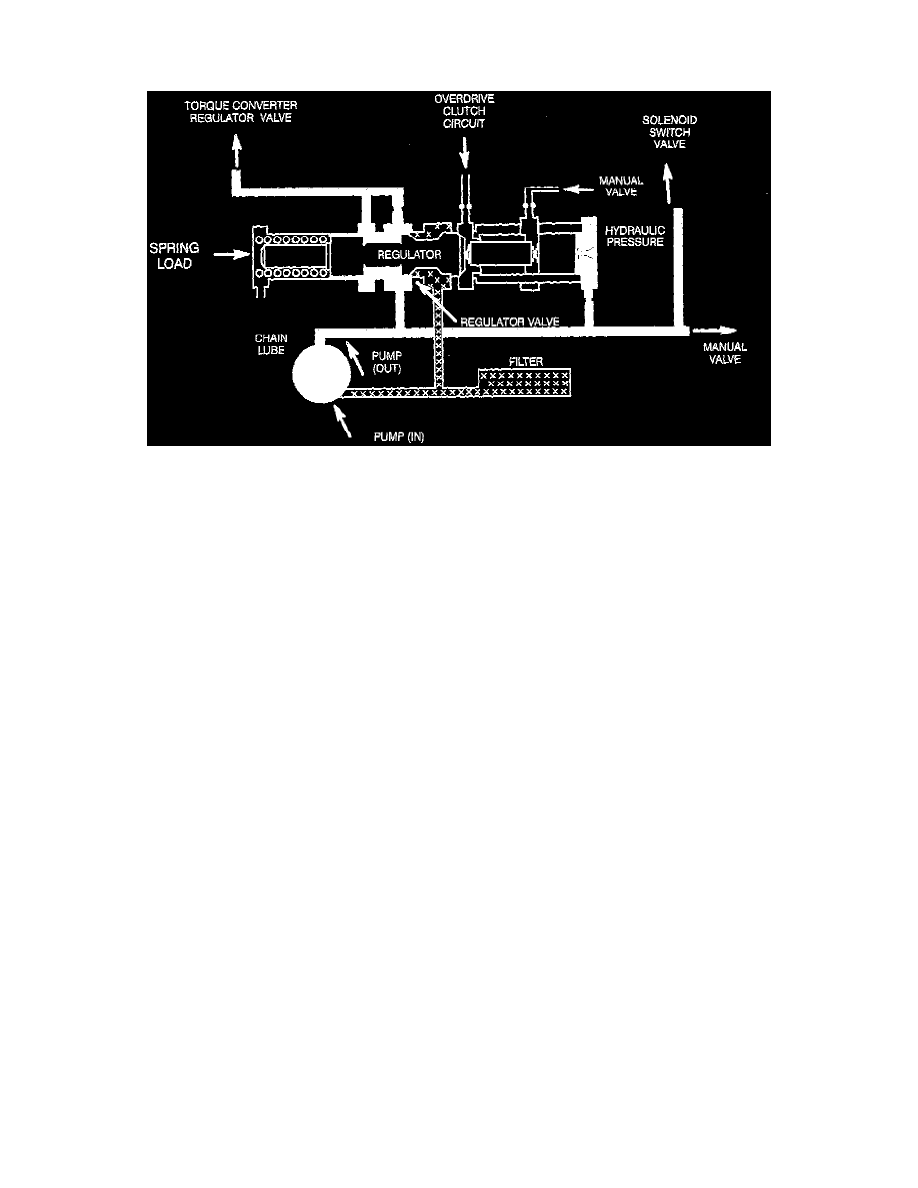Intrepid V6-215 3.5L (1995)

Regulator Valve
The regulator valve has one function: to regulate or control hydraulic pressure in the transaxle. The pump supplies unregulated pressure to the regulator
valve. The regulator valve controls, or limits, pump pressure. Regulated pressure is referred to as "line pressure." The regulator valve has a spring on one
end that pushes the valve to the right. This closes a dump (vent) to lower pressure. Closing the dump will cause oil pressure to increase. Oil pressure on
the opposite end of the valve pushes the valve to the left, opening the dump and lowering oil pressure. The result is spring tension working against oil
pressure to keep or maintain the oil at specific pressures. Regulated pressure varies depending on the gear range the transaxle is operating in.
A system of sleeves and ports allows the regulator valve to work at one of three different predetermined pressure levels. The oil that is dumped by the
regulator valve is directed back to the intake side of the oil pump.
Solenoid and Pressure Switch Assembly
The Solenoid and Pressure Switch assembly, located on the transmission, is used to control the shifting of the transmission. Power for the assembly is
provided on circuit T16 from the transmission control relay. The Transmission Control Module (TCM) provides the ground path for the various
solenoids and pressure switches depending on operating conditions. This assembly is also case grounded to the transmission.
The following circuits are controlled by the TCM for the Solenoid and Pressure Switch Assembly
-
T20 - Low/Reverse solenoid
-
T19 - 2/4 solenoid
-
T60 - Overdrive solenoid
-
T59 - Governor Pressure Solenoid
-
T50 - Low/Reverse pressure switch
-
T47 - 2/4 pressure switch
-
T9 - Overdrive pressure switch
Solenoid Switch Valve
